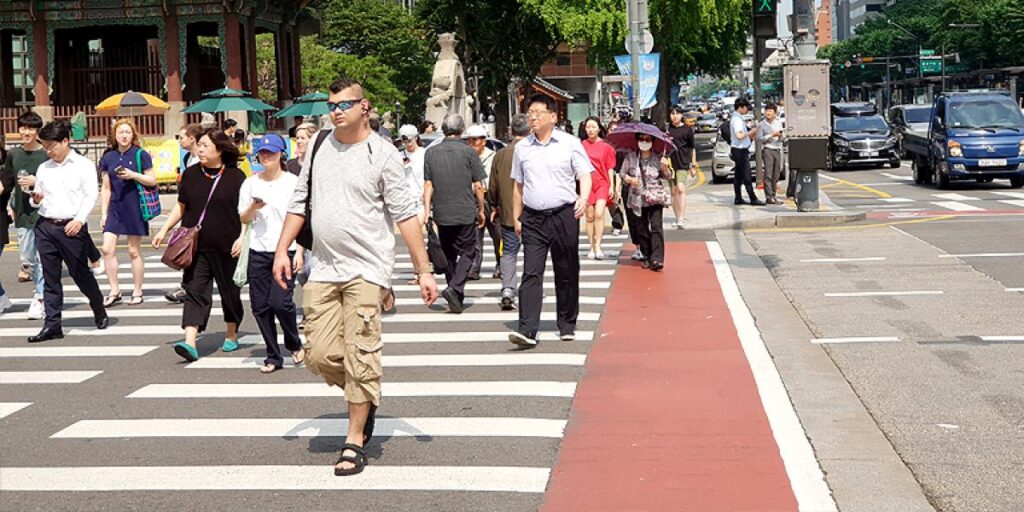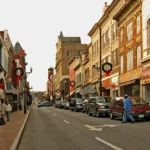As cities around the world strive to become more sustainable and people-centered, the concept of livable streets has emerged as a key principle in urban planning. But what exactly makes a street “livable”? And how can rethinking the design of our streets improve everyday life for everyone?
In this article, we’ll explore the meaning of livable streets, their benefits, core features, and how communities and city planners can transform car-dominated roads into vibrant, inclusive public spaces.
🚶 What Are Livable Streets?
Livable streets are urban or suburban streets designed with the needs of people—not just cars—in mind. They prioritize walkability, safety, accessibility, and environmental sustainability, creating spaces where residents can walk, bike, socialize, and live comfortably.
The term originated with the groundbreaking work of Donald Appleyard in the 1980s, who found that streets with less traffic led to stronger communities and improved well-being.
🌟 Why Livable Streets Matter
1. Improved Safety for All

By slowing down traffic and providing protected pedestrian crossings, livable streets reduce accidents and fatalities for walkers, cyclists, and drivers alike.
2. Better Health and Well-being
Encouraging walking, cycling, and time outdoors leads to increased physical activity, reduced stress, and stronger mental health for all age groups.
3. Environmental Benefits
Livable streets promote sustainable transport, reduce vehicle emissions, and often incorporate green infrastructure like trees and rain gardens to enhance air quality and stormwater management.
4. Social Connection and Community Building
When streets are safe and pleasant to use, people naturally gather, interact, and form deeper community ties, leading to more vibrant and cohesive neighborhoods.
5. Boost to Local Economies
Streets designed for people increase foot traffic to local businesses and encourage neighborhood-level economic activity, supporting small entrepreneurs.
🛣️ Key Features of Livable Streets
Creating a livable street is about balance—ensuring vehicles can move through while giving priority to people. Here are the essential features:
🚸 1. Traffic Calming Measures
- Speed bumps, curb extensions, and roundabouts
- Narrowed lanes and reduced speed limits
- Shared space design to slow vehicles
🚶♀️ 2. Pedestrian Infrastructure
- Wide, unobstructed sidewalks
- Clearly marked crosswalks with traffic signals
- Benches, shade trees, and resting areas
🚴 3. Cycling Facilities
- Dedicated bike lanes or shared-use paths
- Secure bike parking
- Traffic-separated bike infrastructure
🪴 4. Greening and Aesthetics
- Tree-lined streets and planters
- Pocket parks, green medians, and rain gardens
- Public art, murals, and community gardens
🚌 5. Public Transit Access
- Easy access to bus stops, light rail, or subways
- Real-time transit info displays
- Safe waiting areas with seating and shelter
🧑🤝🧑 6. Inclusive Design
- ADA-compliant walkways and ramps
- Audible crossing signals for the visually impaired
- Designs that accommodate people of all ages and abilities
🏙️ Examples of Livable Streets in Action

- Times Square, New York City (USA): Once dominated by cars, now reimagined as a pedestrian plaza filled with seating, greenery, and events.
- Exhibition Road, London (UK): A shared space where pedestrians, cyclists, and drivers coexist with minimal traffic control features.
- Barcelona’s Superblocks (Spain): A series of city blocks where through-traffic is limited, giving priority to pedestrians and public life.
📈 How to Make Streets More Livable
For City Planners & Local Governments:
- Reallocate road space from cars to people (e.g., converting lanes to bike or bus lanes)
- Implement complete street policies that serve all users
- Encourage mixed-use zoning to bring housing, work, and services closer together
- Host open streets events to let the community experience car-free life
For Community Members:
- Advocate for pedestrian safety improvements
- Participate in local urban planning meetings
- Support local businesses and public transport
- Create neighborhood-led initiatives like parklets or street murals
🌍 Livable Streets and the Future of Cities
As urban populations rise and climate concerns intensify, livable streets are becoming essential to sustainable city design. These streets are not just conduits for cars—they’re public spaces that can improve quality of life, equity, and resilience for current and future generations.
By reimagining our streets as places for people—not just pipelines for vehicles—we can create cities that are healthier, greener, and more connected.
FAQ’s
1. What does the term “livable street” mean?
A livable street is a roadway designed to prioritize the safety, comfort, and well-being of all users—not just vehicles. It encourages walking, biking, and community interaction through traffic calming, green spaces, and inclusive infrastructure.
2. How do livable streets improve safety for pedestrians and cyclists?
Livable streets use features like speed bumps, narrowed lanes, raised crosswalks, and dedicated bike lanes to slow down traffic and create safer conditions for non-motorized users.
3. Can livable streets reduce traffic congestion?
Yes. By encouraging alternative modes of transport like walking, cycling, and public transit, livable streets help reduce car dependency, which in turn eases traffic congestion.
4. What are some examples of successful livable street projects?
Examples include Times Square in New York, which was transformed into a pedestrian plaza, and Barcelona’s Superblocks, which limit car traffic to promote walkability and public life.
5. How do livable streets support environmental sustainability?
They reduce vehicle emissions by promoting walking and transit use, and often incorporate green infrastructure like trees, bioswales, and permeable surfaces to manage stormwater and improve air quality.
6. Are livable streets more inclusive for people with disabilities?
Absolutely. Features like smooth, ADA-compliant sidewalks, curb ramps, tactile paving, and audible signals make streets more navigable and inclusive for people with mobility or sensory impairments.
7. How do livable streets impact local economies?
By increasing foot traffic, livable streets boost visibility for small businesses, encourage local shopping and dining, and often lead to increased property values in the surrounding areas.
8. What can residents do to help create livable streets in their neighborhoods?
Residents can attend community planning meetings, advocate for safer street designs, support local initiatives like parklets or open street days, and work with city planners to prioritize people-centered infrastructure.
Conclusion: Designing Streets for People, Not Just Cars
Livable streets are about more than transportation—they’re about transformation. From cleaner air and safer sidewalks to stronger communities and thriving local businesses, walkable and people-friendly streets have the power to reshape urban life for the better. If you’ve ever wished your neighborhood felt more welcoming and walkable, remember: livable streets start with bold design, public input, and a shared vision for a better future.



















